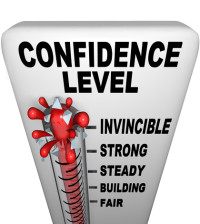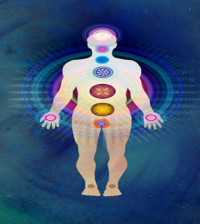- 5 Tips To Finding Peace Within Yourself
- The Do’s and Don’ts of Learning How to Accept Yourself
- How to Find Your Inner Peace and Transform Your Life
- 8 Benefits of Having an Open Mind and How to Get One
- Learn How To Be A Happier Person
- What Is The Meaning Of Life?
- Laws of Abundance – The Riches of Love and Joy
- How to Be Laid Back By Following These 9 Simple Strategies
- The meaning of confucius’ golden rule – 4 practical ways of living it
- 3 methods of unleashing the power of contentment in your life
8 Useful Behavior Modification Techniques for Adults

Adult behavior modification is the method of changing the way an adult reacts either physically or mentally to a given stimulus. This process can be applied to anything from stopping a drug addiction to making your bed each morning. Behavior modification is a treatment method, and it is based on the values of operant conditioning. The undesirable behaviors are exchanged with more suitable ones through various techniques and methods. B.F. Skinner, the father of behavior modification science, conducted scientific research in the 1950s that involved training rats through rewards and punishments. His practices and theories continue to influence schools of psychology and practicing psychologists to this day.
Behavior modification has been successfully used to treat anxiety, obsessive-compulsive disorder (OCD), enuresis (bed-wetting), among others. Some methods of behavior modification require preparation and attention, where others are just common sense. Find out what you can do to shake your nasty habit today.
1. Positive Reinforcement
Some of us want to know, “What do I get out of this?” Positive reinforcement answers this question. This practice involves the addition of a gratifying experience in reaction to something someone has done. Many adults respond to praise and recognition. Treat yourself to a night out every time you avoid the behavior you are trying to modify.
2. Negative Reinforcement
With negative reinforcement, the method of training involves a negative reinforce. This could be a behavior or event with which the reinforcing properties are associated with its removal. Opposing behavior is shunned by performing an action, and as a result of this, the action is repeated prior to the adverse reaction.
3. Punishment
One of the toughest things we can do as adults is to punish ourselves. Punishment is a form of behavior modification that discourages the unwanted act by application of an unpleasant stimulus in reaction to the behavior.
4. Emotional Freedom Technique (EFT)
Also known as Meridian Tapping, EFT is based on the premise that negative emotions or behaviors stem from short circuits in the body’s energy system. These techniques are done by drumming on certain areas on the body to balance and release the short circuit.
5. Neuro-Linguistic Programming (NLP)
The NLP technique is a study of communication; how we communicate with others and ourselves, and how that affects the way we react and behave. This communication can be altered through submodalities, metaprograms, etc. to change a behavior.
6. Meditation
Meditation has been used for centuries to help the brain make physiological changes for the better. Not only does it improve brain function and memory, it enables “whole brain synchronization”, a process that allows the left brain portion to interact and be in focus with the right brain hemisphere. Meditation is one of the best behavior modification systems in existence. It alleviates anxiety and depression, causing a remarkable improvement in a person’s sense of well-being.
7. Don’t Give it Attention
You can modify a behavior through ignoring the act. By ignoring the behavior you will often reduce its tendency for appearing again. Don’t give someone attention who is engaging in a behavior that needs stopped.
8. Cognitive Behavioral Therapy (CBT)
CBT is a psychotherapeutic approach that addresses maladaptive behaviors through a number of goal-oriented systematic procedures. The common hallmarks of CBT are the focus on the “here and now”, a structuring of the sessions and path, a guidance role by the therapist, and on alleviating both the patient’s vulnerability and worrisome symptoms.










































You must be logged in to post a comment Login